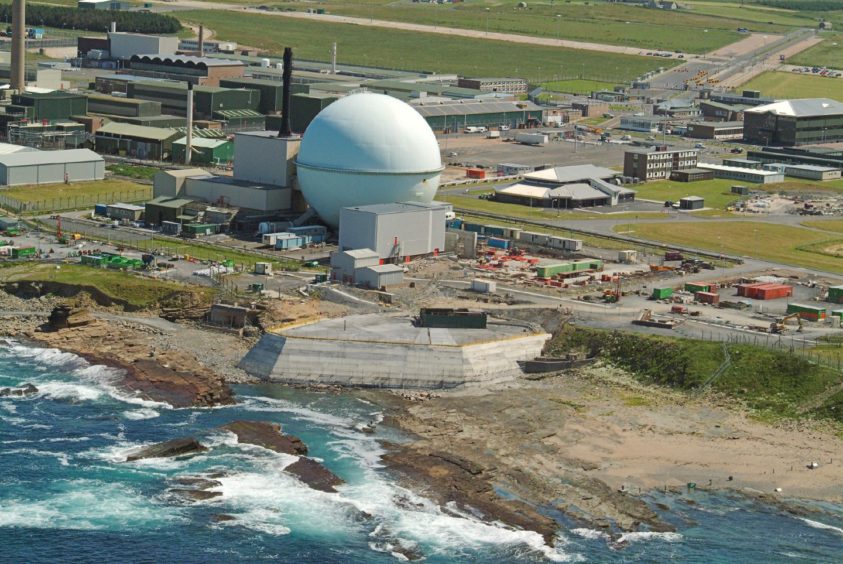
Cleaning up the former nuclear power site at Dounreay and its surrounding area could become quicker and cheaper following a breakthrough by scientists.
Researchers say that, for the first time, they have been able to “measure the unmeasurable” to identify whether minute traces of radioactive plutonium were bred in reactors or came from general global pollution.
Hotspots of radioactivity have regularly been found around Dounreay, on the Caithness coast, which was the site of fast breeder reactor (FBR) research and development from 1955 to 1994 and is in the process of being closed down, demolished and cleaned up.
Jeremy Andrew, laboratory and analytical support manager at the facility, said the results of the research would help identify, target and assess areas of local contamination and could lead to “considerable cost and time savings”.
Mr Andrew was part of a team led by Lancaster University, which included scientists from Swiss university ETH Zurich, that made the breakthrough.
The research involved examination of soil samples taken from Dounreay, an area nearby and two more sites further away.
Using accelerator mass spectrometry, the researchers were able identify ‘fingerprint’
trace-level quantities of plutonium then estimate levels that were attributable reactor pollution and distinguish them from that caused by general global pollution.
The researchers, whose findings were recently published in the scientific journal Nature Communications, said the findings could help inform the extent to which the clean-up of the local plutonium might be necessary.
Principal investigator, professor Malcolm Joyce, of Lancaster University, said: “Plutonium is primordially extinct but that does not mean we don’t find it in the earth. Up until 1980 many nuclear weapons were tested in the atmosphere – this, coupled with other forms of pollution, has resulted in trace levels of pollution.
“Our study showed we’ve measured what one might have once assumed was ‘unmeasurable’, differentiating between two very different sources of trace amounts of plutonium, hence demonstrating that it is possible to measure this extraordinarily low-level indicator of human activity if we need to do so.”
Mr Andrew added: “This research demonstrates the benefits of close collaboration between nuclear decommissioning sites and academia.
“As well as the potential applications of this advanced method in characterisation strategy and planning, we have developed a better understanding of the applicability of a broad range of measurement capabilities, including those available in more routine radiological laboratories.”
Radioactive hotspots continue to be recovered from the foreshore at Dounreay and the nearby public beach at Sandside in regular monthly scans.
They are the legacy of sloppy historical waste practices at the site, which led to the release into the Pentland Firth of shards of uranium and plutonium fuel which was reprocessed at the plant.
Dounreay Nuclear Power Development Establishment was formed in 1955 to pursue the
UK Government policy of developing civil FBR technology and was operated by the United Kingdom Atomic Energy Authority (UKAEA).
The UKAEA built three nuclear reactors at the facility, two of which were FBRs and the third a thermal research reactor used to test construction materials subject to high radiation levels for the programme.
Dounreay, remote from large centres of population, was chosen as the reactor location for safety reasons.
From 2012, the site was managed by Dounreay Site Restoration (DSRL). DSRL recently became a wholly-owned subsidiary of the Nuclear Decommissioning Authority (NDA), which has now assumed complete control of the site.
Last August, the NDA said it would be around 2333 before the 148-acres of land it covers will be safe for reuse.
The organisation added that “credible options” for the future of the land will be developed over this year and next.
In March, Dounreay emerged as a possible site for a prototype fusion power plant.